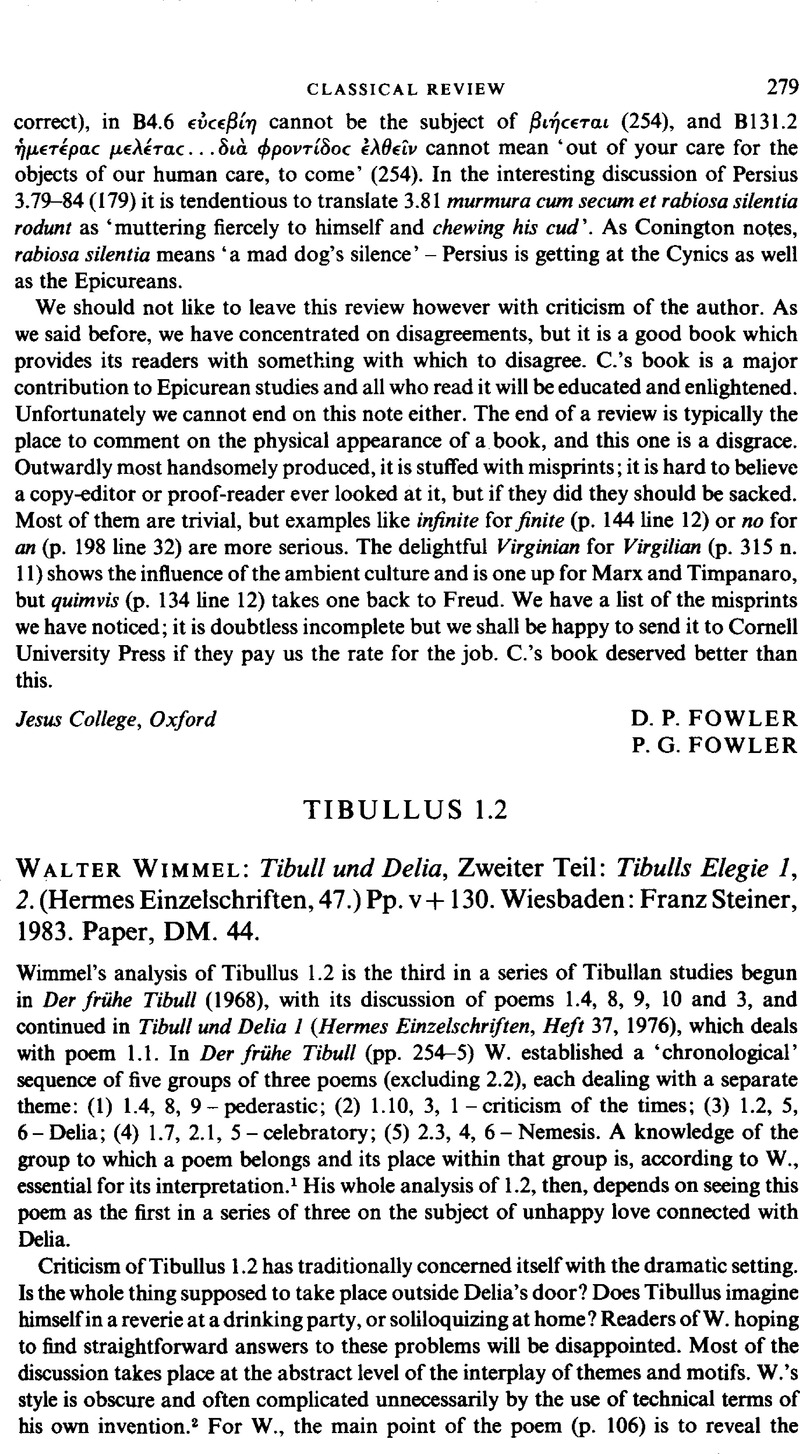No CrossRef data available.
Published online by Cambridge University Press: 16 February 2009

1 P. 64 n. 100a ‘In ihrer Reihenfolge muß folglich ein Erklärungsfaktor liegen.’ Cf. Der frühe Tibull p. 256.
2 E.g. Eingangstrāger p. 65f., Absturz p. 53, Vereinfachungsteil p. 52, Lagerungsthematik p. 72f. Gitter p. 104f.
3 Kenney, E. J., Classical Review 20 (1970), 337–340;CrossRefGoogle ScholarVretska, K., Gnomon 51 (1979), 18–22.Google Scholar
4 W.'s own view of the ordering of the poems (pp. 96–8) is that the ‘early’ Marathus poems were put in an unemphatic position towards the end of the collection in deference to Octavian's moral views.
5 W. could perhaps have made more of parallels with Propertius' first book, in particular the paraklausithyron 1.16, and poem 1.1 with its saga motif 19–24 and its similar ending (with Tib. 1.2, 89–98 cf. Prop. 1.1.35–8).
6 Cairns, F.Tibullus, a Hellenistic poet at Rome pp. 166–167.Google Scholar The komos suggestion had originally been made by Leo, F., Philol. Untersuchungen 2, 1881, p. 34f.Google Scholar
7 The suggestion made by Guy Lee, Tibullus Elegies (ed. 2, 1982), p. 110 that dens refers to some kind of spike (cf. OLD dens 3) used by the girl instead of the real key is simpler and has more point.
8 W.'s own comments on the difficulty of defining ‘außersatirisch’ elements in satire (p. 65) would apply equally well to defining ‘außerelegisch’ elements in elegy.